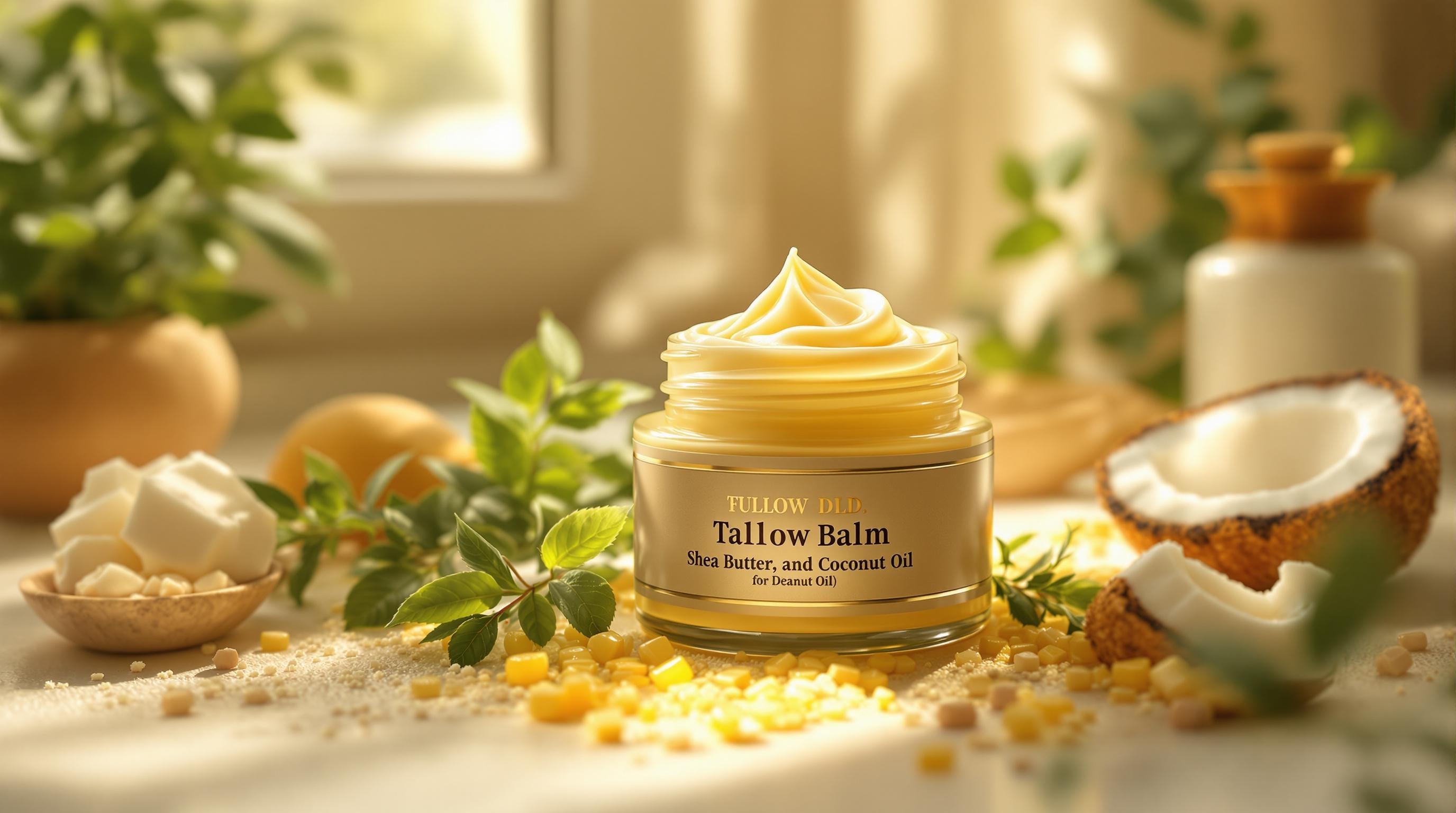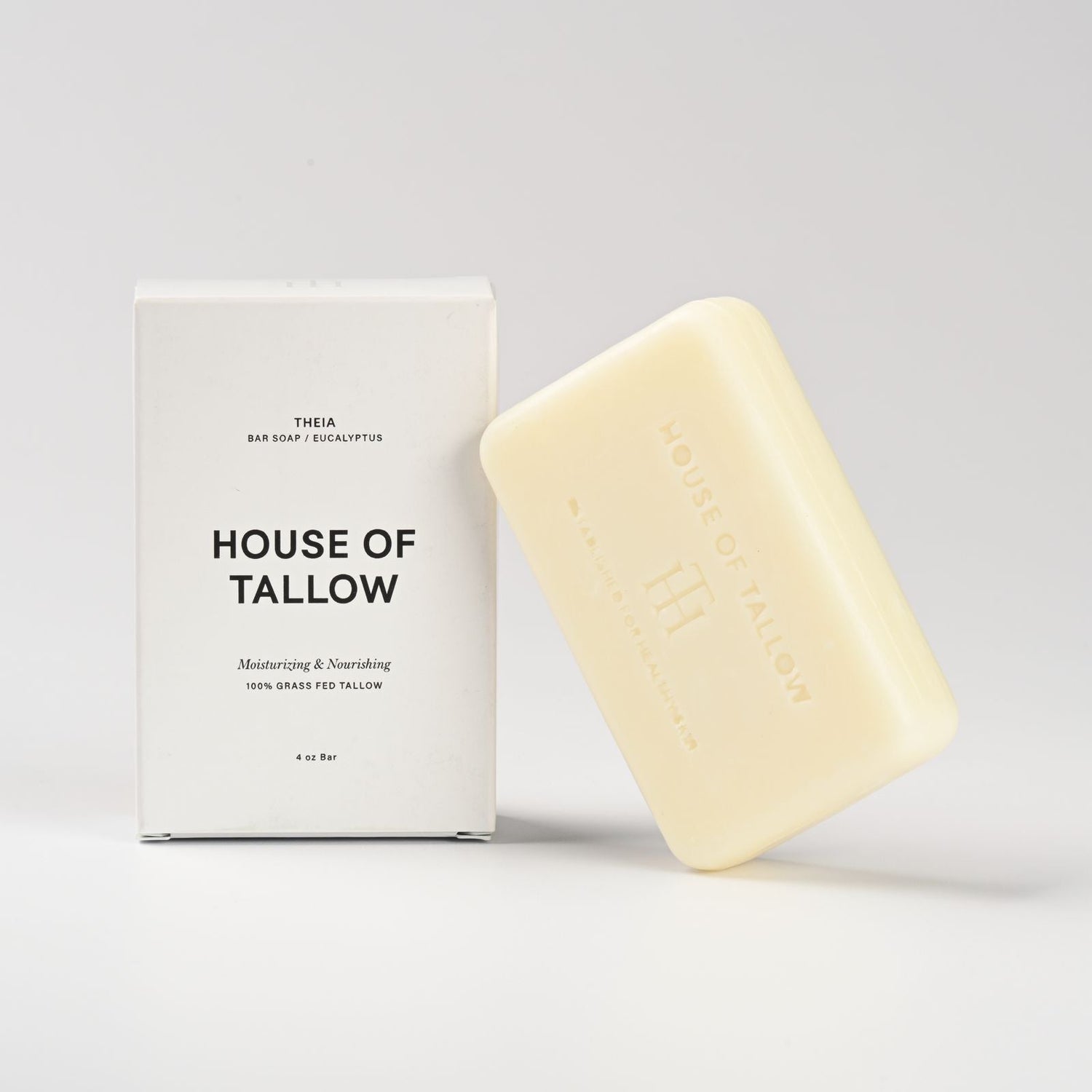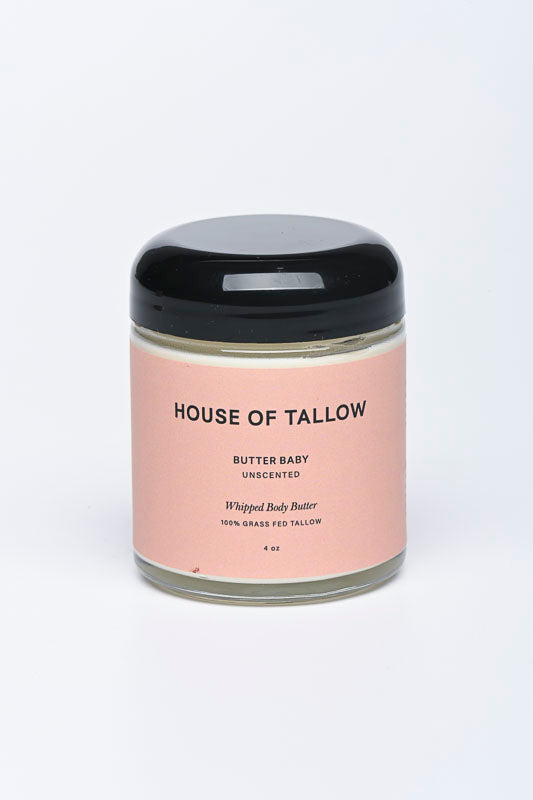Tallow is a natural ingredient that closely mimics human skin's natural oils, making it highly effective for supporting and repairing the skin barrier. It hydrates, protects, and soothes the skin while delivering essential nutrients like vitamins A, D, E, and K. Here's why tallow stands out:
- Deep Nourishment: Tallow penetrates deeply, thanks to its similarity to human sebum, delivering nutrients directly to the skin barrier.
- Barrier Repair: It reduces water loss, soothes irritation, and helps heal damaged skin, making it ideal for conditions like eczema.
- Nutrient-Rich: Packed with fat-soluble vitamins, tallow promotes hydration, antioxidant protection, and healing.
Quick Comparison:
| Feature | Tallow | Plant Oils | Synthetic Products |
|---|---|---|---|
| Similarity to Skin's Oils | Very High | Moderate | Low to Moderate |
| Fat-Soluble Vitamin Content | High | Varies | Limited |
| Barrier Repair Performance | Excellent | Good | Variable |
| Comedogenic Rating | 2/5 (Low Risk) | Varies (0-5) | Varies |
Tallow’s unique compatibility with skin makes it a reliable option for those seeking long-term skin health. Let’s dive into the details.
Why Is Everyone Putting Beef Tallow On Their Skin?
1. Tallow's Effects on Skin
Tallow's molecular structure plays a key role in its impact on skin health. It helps maintain the skin barrier's integrity while supporting its natural functions.
Here’s how tallow benefits the skin barrier:
- Deep Penetration
Tallow's saturated fatty acids (50-55%) closely resemble the composition of human skin [1]. This similarity allows it to penetrate deeply into the skin, delivering nutrients directly to where they’re most needed.
- Rich Nutrient Profile
Grass-fed tallow is packed with nutrients that directly aid skin barrier function:
| Nutrient | How It Helps |
|---|---|
| Vitamin A | Encourages cell turnover and boosts collagen production |
| Vitamin D | Aids skin cell repair and metabolism |
| Vitamin E | Shields against free radical damage |
| Vitamin K | Promotes healing and improves circulation |
- Barrier Repair
Tallow doesn’t just moisturize - it actively repairs damaged skin barriers. Its anti-inflammatory properties help soothe irritation and aid the skin's natural healing process [1][3]. This makes it especially helpful for conditions like eczema and psoriasis, where the barrier is often compromised.
Tallow also reduces transepidermal water loss (TEWL) [1]. By mimicking the skin's lipid barrier, it locks in moisture while still allowing the skin to breathe - a balance that many synthetic products struggle to achieve.
For sensitive skin, tallow is a gentle yet effective option. Research indicates that creams high in tallow fats can reduce dermatitis symptoms by lowering IgE levels [5]. Plus, with a low comedogenic rating of 2 out of 5, it nourishes deeply without clogging pores.
Products like House of Tallow's unscented Gaia cream highlight the benefits of pure tallow. Free from added fragrances, it lets the skin heal naturally without the risk of irritation.
This biological compatibility gives tallow an advantage over many plant-based alternatives, which we’ll examine next.
2. Plant Oil Performance
Plant oils are widely used in natural skincare, but their ability to support the skin barrier depends heavily on their molecular structure and fatty acid makeup.
Structural Differences
Compared to tallow, plant oils typically have more unsaturated fatty acids. This difference influences how they interact with the skin barrier. For example, jojoba oil stands out due to its composition as a liquid wax ester, which makes it more stable and less prone to oxidation. It also closely resembles human sebum[2].
Barrier Protection Performance
The effectiveness of plant oils in maintaining the skin barrier varies, as shown below:
| Oil Type | Key Components | Barrier Support Effects |
|---|---|---|
| Sunflower | High linoleic acid | Reduces TEWL (transepidermal water loss) |
| Coconut | 49% lauric acid | Increases surface lipids |
| Jojoba | Sebum-like esters | Boosts hydration |
Absorption and Occlusion
Plant oils generally create weaker protective layers compared to tallow. This is due to differences in their lipid structures, which can be a drawback for skin with a compromised barrier.
Potential Limitations
There are some challenges when using plant oils for skin barrier support:
Microbiome Impact
Certain plant oils, like coconut oil, have antimicrobial properties. However, these strong bioactive effects can sometimes disturb the skin's delicate microbiome, unlike the more compatible lipids found in tallow[1][5].
For individuals with sensitive or compromised skin, plant oils may not be the most reliable option on their own. Their limitations often lead to their use in combination with tallow-based ingredients, which provide more consistent support for the skin barrier.
sbb-itb-a1b9fc0
3. Synthetic Product Results
Synthetic moisturizers take a multi-layered approach to replicate the skin's natural barrier. Unlike tallow, which delivers nutrients in a unified way, synthetic products rely on separate components to achieve similar effects.
Performance on Different Skin Types
How well synthetic moisturizers work depends on your skin type and the product's formulation. While they often provide quick hydration, long-term use may lead to:
- Reduced production of the skin's natural moisturizing factors (NMF)[1]
- Possible irritation from synthetic preservatives or added fragrances
Barrier Function Impact
Products with ceramides can boost hydration levels, but they don't match tallow's ability to integrate with the skin's structure[1][3].
Structural Compatibility
Tallow's natural lipid profile makes it a close match to the skin, something synthetic ingredients struggle to replicate. Even advanced formulations designed to mimic skin lipids fall short of tallow's complete mix of skin-friendly nutrients and vitamins[1][3].
Ceramide-based moisturizers do improve surface hydration, but their effects are mostly superficial and don't provide the deeper support needed for robust barrier function[1][4].
This reliance on compartmentalized solutions highlights why synthetic products often require intricate formulations to come close to tallow's natural compatibility.
Direct Comparison of Options
Looking at the individual analyses side by side, tallow stands out for several reasons:
Vitamin Content and Stability
Here's how the vitamin profile stacks up:
| Component | Tallow | Plant Oils | Synthetic Products |
|---|---|---|---|
| Vitamin Absorption | High | Moderate | Low |
| Stability | 1-2 years | Up to 1 year | 2-3 years |
Barrier Protection and Water Loss
Plant oils, such as jojoba oil, are known for mimicking sebum effectively [2]. On the other hand, synthetic products often rely on ingredients like silicones, which act as barriers but don't provide any nutritional value [4].
Practical Considerations
- Grass-fed tallow makes use of agricultural byproducts, whereas plant oil farming requires more intensive resources.
- Tallow has the lowest allergy risk compared to plant oils (which may trigger nut allergies) and synthetic products (which often include preservatives).
This comparison highlights tallow as a well-rounded option for repairing and protecting skin barriers, aligning with the body's natural processes instead of trying to replace them.
Tallow and Skin Health
Tallow plays a key role in supporting and improving the skin barrier, especially for sensitive skin. Thanks to its natural vitamin content, it directly aids in maintaining healthy skin function[3].
With a non-comedogenic rating of 2[6], tallow is generally suitable for most skin types. It also offers natural anti-inflammatory properties that can help manage issues like eczema.
Research indicates that regular use of tallow can improve skin barrier performance within 4-6 weeks[7]. Many users report feeling immediate hydration and softness after application. For those interested in high-quality options, brands like House of Tallow provide grass-fed tallow products, including their unscented Gaia cream and baby care items, which are designed to deliver these benefits effectively.
When sourced from grass-fed animals, tallow works in harmony with the skin's natural processes, making it a reliable choice for promoting long-term skin health[5].
FAQs
How long does it take for tallow to heal skin?
Tallow works with your skin's natural biology, and its effects typically unfold in three stages:
- Within 30 minutes: Skin feels more hydrated.
- 1-2 weeks: Noticeable improvement in moisture retention.
- 4-6 weeks: Skin barrier becomes stronger and more resilient.
The timeline can vary based on factors like the severity of skin damage, how often you apply it, and external conditions like weather.
For best results:
- Apply tallow on damp skin to help it absorb better.
- Use small amounts initially, especially if your skin is sensitive.
Consistency is key. Regular use helps tallow continue to support your skin's barrier over time[1][2].




